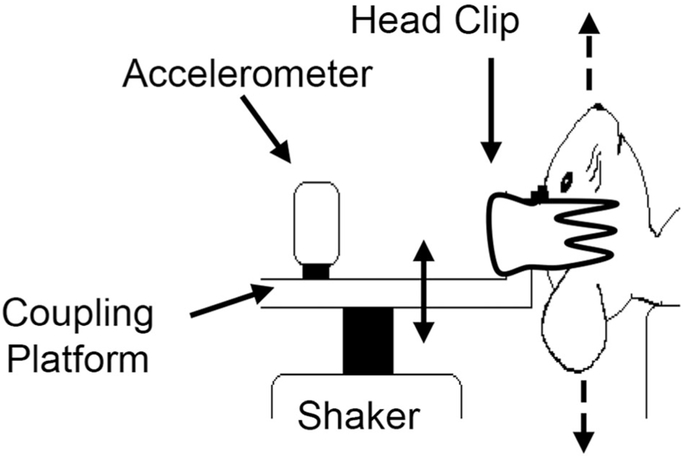Figure 2.
Linear translation stimuli are presented in the naso-occipital cranial axis (dashed arrows) to elicit vestibular sensory evoked potentials. Anesthetized animals were placed supine, and the head was coupled to the electromechanical shaker and platform using a spring-loaded clip. A calibrated accelerometer was mounted to the platform to monitor stimuli.

